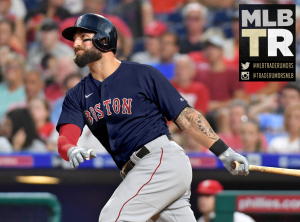4:50pm: Lucroy would earn a $1.5MM base salary were he to crack the Major League roster, Rob Bradford of WEEI reports (via Twitter).
February 19, 1:30pm: The Red Sox have formally announced the deal. They’re now up to 67 players in Major League camp.
February 18: The Red Sox have a minor-league deal in place with free agent backstop Jonathan Lucroy. Chris Cotillo of MassLive.com (via Twitter) first reported it was coming close; Jon Heyman of MLB Network added on Twitter that a minors pact had been completed.
At 33 years of age, Lucroy is no longer the multi-dimensional performer he once was. One of the game’s best all-around backstops from 2012 through 2016, the vet has since settled into a journeyman existence.
Over the past three seasons, Lucroy carries a cumulative .248/.315/.350 batting line over 1,263 plate appearances. He’s still tough to strike out but just doesn’t make the kind of contact he once did. That’s reflected in declines in his power numbers, batting average and on-base percentage.
Lucroy’s once-vaunted skills behind the dish have also diminished. Although he was at one point the face of the pitch-framing awakening and a highly regarded smotherer of errant pitches, Lucroy has in recent years consistently graded in the negative in both areas (by measure of Baseball Prospectus).
If that’s all a bit negative, it’s because Lucroy set such a high standard earlier in his career. He promises to represent worthwhile catching depth for the Red Sox and could perhaps even challenge for a roster spot if there’s an injury or the team considers a third catcher behind Christian Vazquez and Kevin Plawecki.

